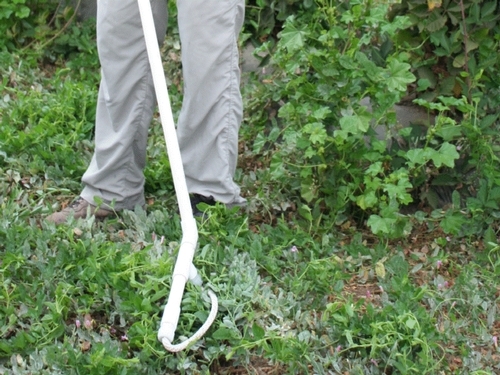From the UC Strawberries and Caneberries blog :: Sept. 11, 2013


While cultivation of the aisles between the hedgerows is successful in keeping the field clear of most weeds, field bindweed is another matter. Not only does field bindweed establish very deep root systems which frustrate control by cultivation, but the lengthy vines of this plant grow into the hedgerow and even up onto the plants themselves (Photo 1). Spray applications of translocated herbicides like Roundup are risky due to sensitivity of blackberry to spray drift. For this reason we have selected ropewick application methods to reduce the possibility of spray drift and crop injury.


As can be seen from the pictures below (Photo, 3, 4 and 5), after two weeks both methods are quite effective in controlling field bindweed in blackberries. It should be noted that the clip method, while quite effective in controlling field bindweed, is far more time consuming than the ropewick applicator and not recommended.
It is lastly important to note that regular retreatment of the field bindweed especially in the fall will be more successful with the ropewick method described here. One should treat regularly but not too frequently and every month to six weeks should work. Let the bindweed regrow some, since it is going into the fall and it is storing starch reserves for its roots. As the bindweed makes sugars in its leaves it is sending that sugar downward into its roots deep in the ground, and this is the time to send some glyphosate into those roots. These roots are the bindweed wheelhouse and this is where to hit it where it hurts.
The use of glyphosate (Roundup) is extensively written about in this article. Before using any of these products, check with your local Agricultural Commissioner's Office and consult product labels for current status of product registration, restrictions, and use information.
Attached Images:

Photo 5: Field bindweed plants two weeks after having been treated with Roundup saturated sponges clipped onto individual leaves.

Photo 6: Bindweed vine arising from plants treated by ropewick application interspersed among healthy blackberry canes.

Photo 7: Glyphosate damage on blackberry—very sensitive